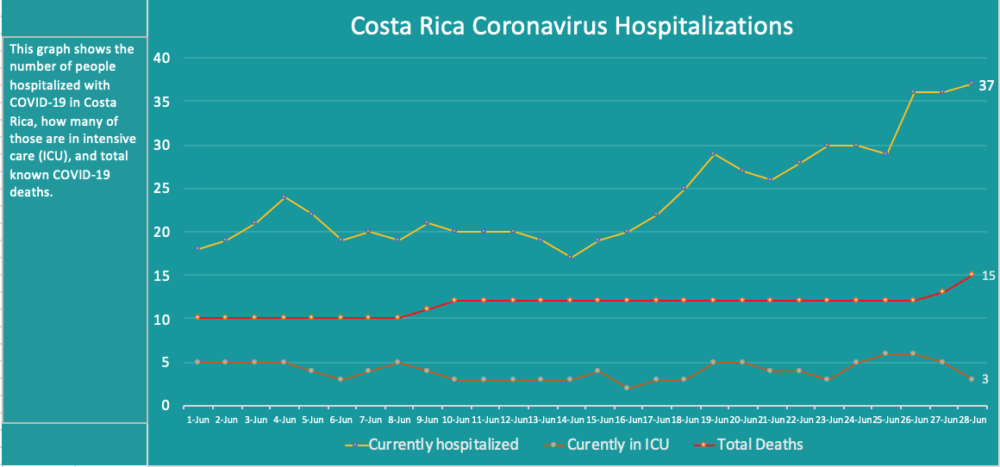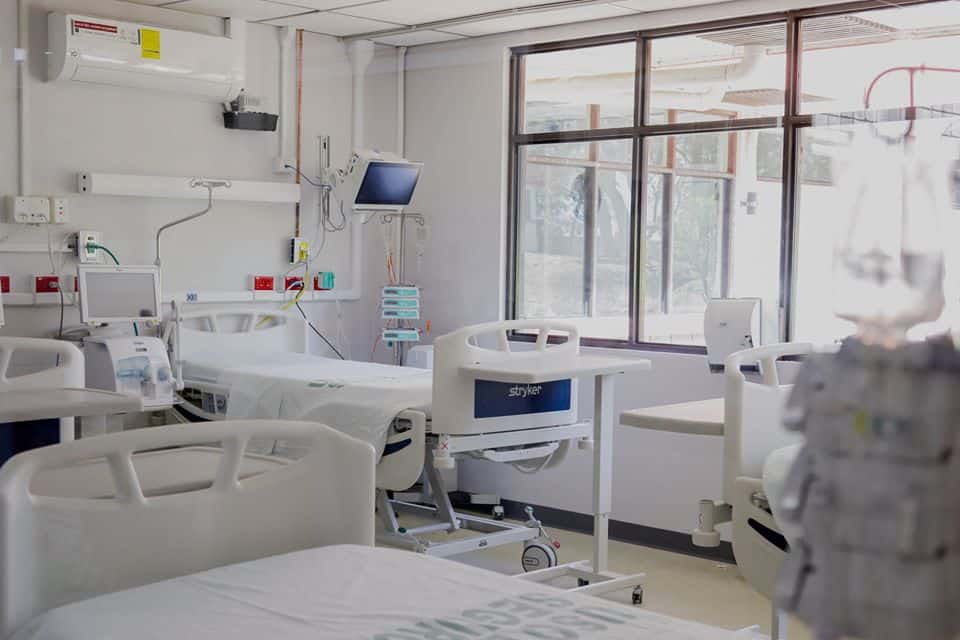Mario Ruiz, the medical manager of the Costa Rican Social Security System (CCSS), on Sunday detailed the country’s limited hospital capacity in the face of the coronavirus pandemic.
Here are highlights from his presentation:
‘Imminent risk’ of hospital ICU saturation
Projections developed by the CCSS show an “imminent risk” of intensive-care saturation if the number of new cases remains elevated over a three-week span, Ruiz said.
Based on a model estimating that 5% of all new coronavirus cases will require hospitalization, and considering the typical length of that hospitalization, the CCSS projects that 88 new daily cases over three weeks could saturate current capacity.
“If we continue our current behavior of increases over three weeks, we would reach this situation,” Ruiz said. “There is an imminent risk that, in the short term, we could saturate the capacity of our intensive care.”
As of Sunday, 37 people in Costa Rica are hospitalized with COVID-19. Three people are in intensive care after two patients in the ICU died over the weekend.
The CCSS is converting an addition 32 intensive-care beds to treat coronavirus patients — a move which reduces capacity for other emergency situations.
When the public-health system completes this project to add COVID-19 ICU capacity, its models indicate hospitals would reach capacity at 250 new coronavirus cases over three weeks.
“In a scenario of 2,000 weekly cases, by the second week, we would deplete the capacity of our ICUs,” Ruiz said, indicating that at that point, coronavirus patients would impact the ability to respond to other emergencies (car crashes, heart attacks, etc.).
“With a scenario of 5,000 to 10,000 [weekly] cases, the public system would collapse,” Ruiz added. “If the health services collapses, we will face an unimaginable crisis.”
Last week, Costa Rica added 917 new known cases.
Costa Rica’s test positivity rate is increasing
Costa Rica averaged 131 new known cases each day over the last week, the highest such figure so far during the coronavirus crisis.
Meanwhile, Costa Rica’s rate of positive tests is increasing, Ruiz said. Citing CCSS data, Ruiz indicated that:
- In mid-April, Costa Rica identified one positive case for every six negative tests.
- Today, Costa Rica is identifying one positive test for every three negative tests.
According to the World Health Organization, positivity rates should remain below 5%; an elevated positivity rate could suggest Costa Rica isn’t testing enough.
“There is higher circulation of the virus, and higher chances of contagion,” Ruiz said of the positivity rate.
COVID-19 is ‘generating pressure’ on hospital system
Though hospitalizations have remained relatively low so far during the pandemic, responding to suspected cases is “generating pressure” on the CCSS, Ruiz said.
During the crisis, hospitals have attended to nearly 24,500 people considered as suspect cases due to their respiratory symptoms. While just 2,555 of those tested positive for SARS-CoV-2, Ruiz indicated that suspect cases have to be treated as if they have COVID-19 while their test is in process.
“An intensive care spot doesn’t implicate just a bed,” he said. “It means protective equipment, experienced personnel.
“These resources are finite.”
Through Saturday, just 10% of non-ICU hospital beds reserved for coronavirus patients are occupied, Ruiz said (47 of 477). However, even working under a strategy of minimum occupancy, 64% of all non-ICU beds in Costa Rica that could be used by coronavirus patients are already occupied.
Half of adult Costa Ricans have risk factors
The CCSS says hypertension, smoking, obesity and diabetes are the most common health conditions associated with COVID-19 complications in Costa Rica.
According to Ruiz, half of adult Costa Ricans have at least one health condition that makes them more vulnerable to serious illness or hospitalization after contracting COVID-19.
Elderly people are also at higher risk due to COVID-19, according to health authorities.







